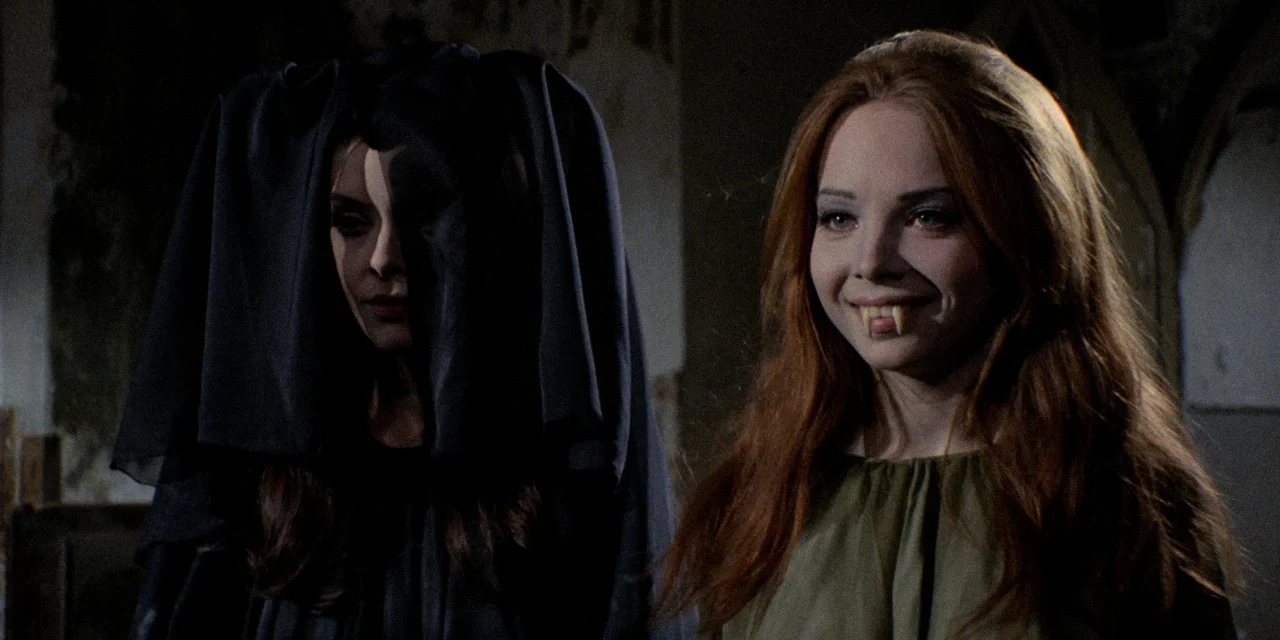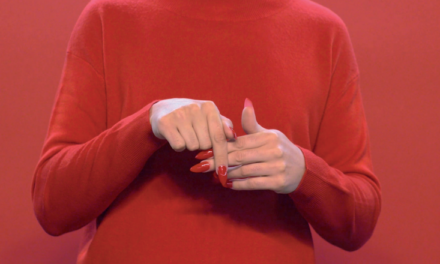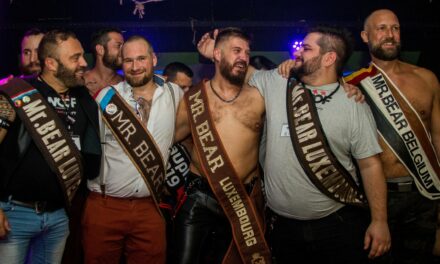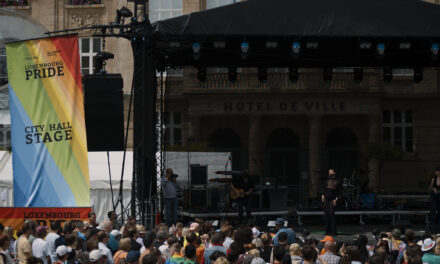With autumn and the designated “spooky season” approaching, we all should take a moment to remember one of the fundamental truths in horror: Vampires are queer.
Starting with The Vampyre by John William Polidori (1819), vampires in modern literature have often had a very sexual side, serving as embodiment for sexuality-related fears – queerness being one of them. This connection persists to this very day. It is no wonder that two of the most celebrated queer shows of the past years, What We Do In The Shadows (2019 -) and Interview With The Vampire (2022 -), are, while being tonally very different, both about vampires.
But let’s talk about lesbians.
Lesbian vampires are almost as old as the vampire genre itself, and have long since developed into their own subgenre. There are many lesbian vampire stories, and there keep being made more to this very day. But if you really want to understand their origins, then they can be traced back to two women: The historical person of Ecsedi Báthori Erzsébet (anglicized form: Elizabeth Báthory), and the fictional character of Carmilla Karnstein.
Báthori Erzsébet (*1560 – ✝1614) was a Hungarian countess and alleged serial killer, although it is up to debate how much of this really happened, and how much of it is smear propaganda against a politically powerful woman. After all, she had inherited a large territory from her husband, and her accusers stood much to gain by getting rid of her. Also, the crimes she was accused of are all rumors spread in medieval times when people wanted to really discredit someone. The story, as it became well-known, was first written down a century after her death. According to surviving sources from her lifetime, she was a completely normal, kind-hearted woman.
According to the legend, Báthori Erzsébet was terribly afraid of aging, to the point of having all the mirrors in her house destroyed so she wouldn’t have to see her reflection grow older. One day, when she struck a serving girl, a drop of the girl’s blood fell on her hand, and the skin there looked younger and smoother. This inspired her to start taking baths in the blood of young women — first peasant girls from the area, and later girls she’d lured to her castle under the guise of a school. She is also said to have drunk from their blood, and having had a female lover as an accomplice. Allegedly, she killed over six hundred young women, and buried them on her property.
Báthori Erzsébet never stood formally trial, despite the King personally requesting it. After her arrest in 1610, she spent the remaining years of her life locked up.
Regardless of the historical truth behind the legend, the story of a blood-bathing lesbian serial killer is a very compelling one, and has inspired many retellings over the years. The connection to the modern vampire myth was only really made in the 1970s, but has since then solidified itself.
The other major influence for the lesbian vampires is Joseph Sheridan Le Fanu’s gothic horror novel Carmilla (1872). It tells the story of a young girl, Laura, who lives with her father and some servants in a secluded castle. One day, a young woman named Carmilla crashes her stagecoach in front of their home, and Laura’s father takes her in while she recovers. Laura and Carmilla quickly grow close, but at the same time, Laura starts to feel weaker and weaker. The horror in the story is twofold: On the one hand, there is the mysterious illness slowly killing Laura, on the other hand, there are the undeniable lesbian undertones. At the time, this was a very scary thing.
In my experience, Carmilla is one of those books that tell you a lot about its readers. If a woman tells you that she liked Carmilla, then that woman is pretty guaranteed to be 1) a big enough nerd to read 19th century gothic horror for fun, and 2) not straight. There also seems to be a certain tendency among lesbians to read this story as a very tragic romance rather than the horror it was intended to be.
Like with Báthori Erzsébet, what really immortalized Carmilla was cinema, and movies’ constant need to bring something new to the screen, while maintaining a recognizable brand.
The first lesbian vampire on screen was Countess Marya Zaleska in Dracula’s Daughter (1936). The story doesn’t really have much to do with Dracula, but seems to be loosely based on Carmilla instead. Since then, there have been multiple, more or less straightforward adaptations of the book, including Blood and Roses (1960), Terror in the Crypt (1964) and The Vampire Lovers (1970), to name a few. As for Báthori Erzsébet, she clearly served as the inspiration for Countess Wandesa in La Noche de Walpurgis (1971), a movie credited to have kicked off the Spanish horror film boom of the 1970s.
By that time, lesbian vampire movies had become a complete genre, often playing on the sexual allure of lesbians, particularly for straight male audiences. However, as more and more queer people entered the entertainment industry and censorship lessened, these stories have shifted to be more about and for women.
Modern lesbian vampires can be found in a greater variety of stories. They moved away from being just monsters preying on innocent young women to being more complex characters, and the relationships themselves are now clearly intended to be read as romantic.
We of course all remember the short-lived Netflix series First Kill (2022), which was a teenage romance between a vampire and a vampire hunter. Fewer of us have seen the anime Vampire in the Garden (2022), where a vampire queen and a human teen soldier run away from the war between vampires and humans, searching for a place where they can exist in peace. Then there is the latest Carmilla movie, Carmilla (2019), which unfortunately got caught up in the chaos around the pandemic, and therefore went almost completely unnoticed.
As far as indie productions go, it is an even deeper rabbit hole. The best-known one is definitely the Carmilla web series, which ran from 2014 to 2016 on YouTube, and even got a movie in 2017 (The Carmilla Movie). But, just as an example, the day before writing this article, I ran into a 50-minutes feature film on YouTube called Lesbian Vampires from Outer Space, released earlier this year. Unfortunately, the title is misleading, as it doesn’t actually feature any outer space elements, but otherwise, it was a perfectly nice indie movie about a lesbian vampire couple running from the Police after they killed some people.
The lesbian vampires are alive and well today, and there are still plenty of stories left to be told about them. If you are looking for some queer horror this autumn, then I suggest you take a look at what they have to offer. Many of the movies I mentioned can be found on YouTube, and of course the original Carmilla novel is available through Project Gutenberg. Or at the CIGALE library, if you prefer physical books.
Happy Halloween!
*Note: I didn’t even try to talk about books, comics, and podcasts. If that is your medium, you are guaranteed to find plenty of good works there, too. I also didn’t mention Castlevania and Castlevania: Nocturne, because I personally didn’t enjoy them all that much. However, they are notable recent shows that I felt needed a mention somewhere.
Photo: still from ‘La noche de Walpurgis’





